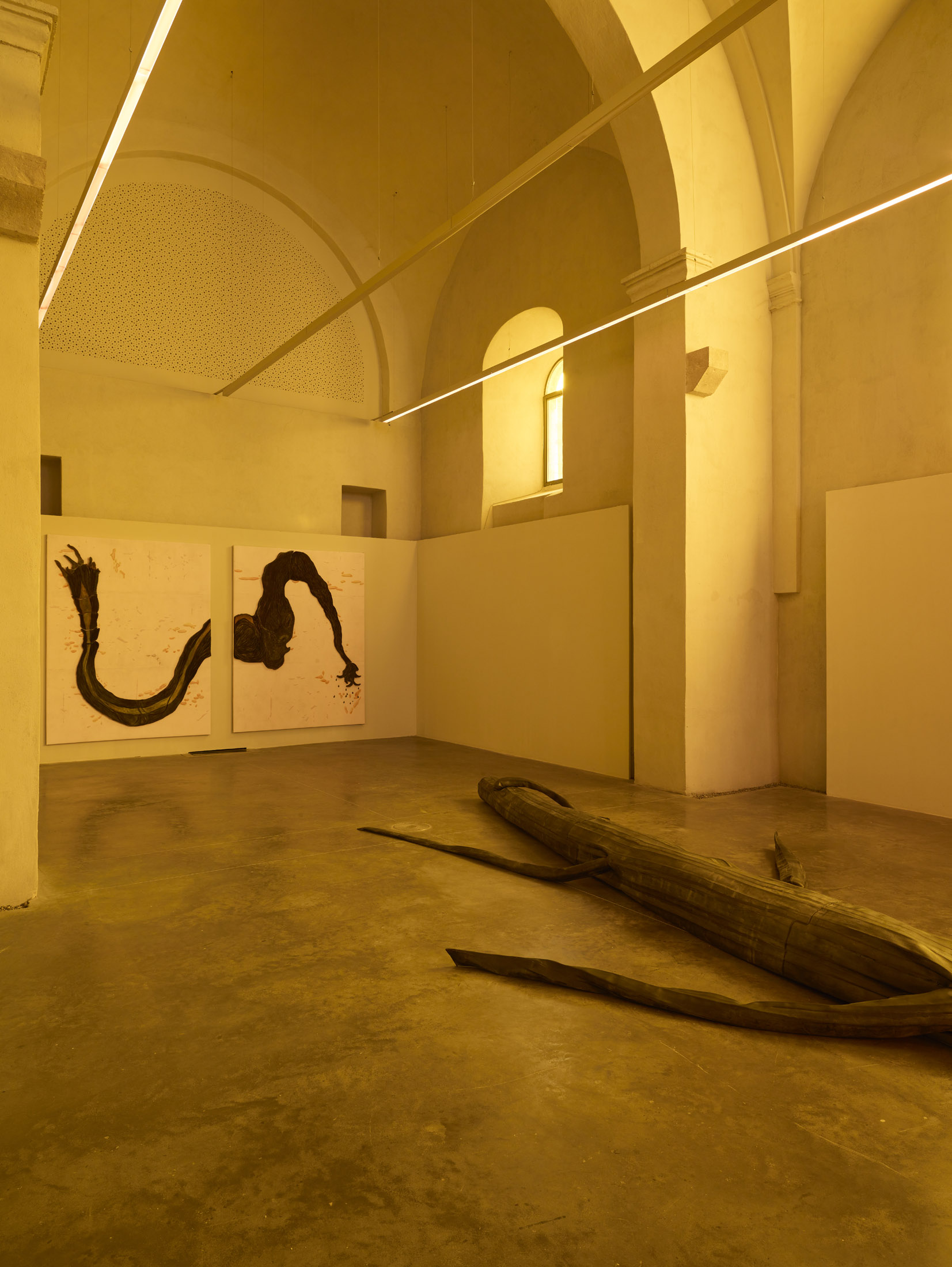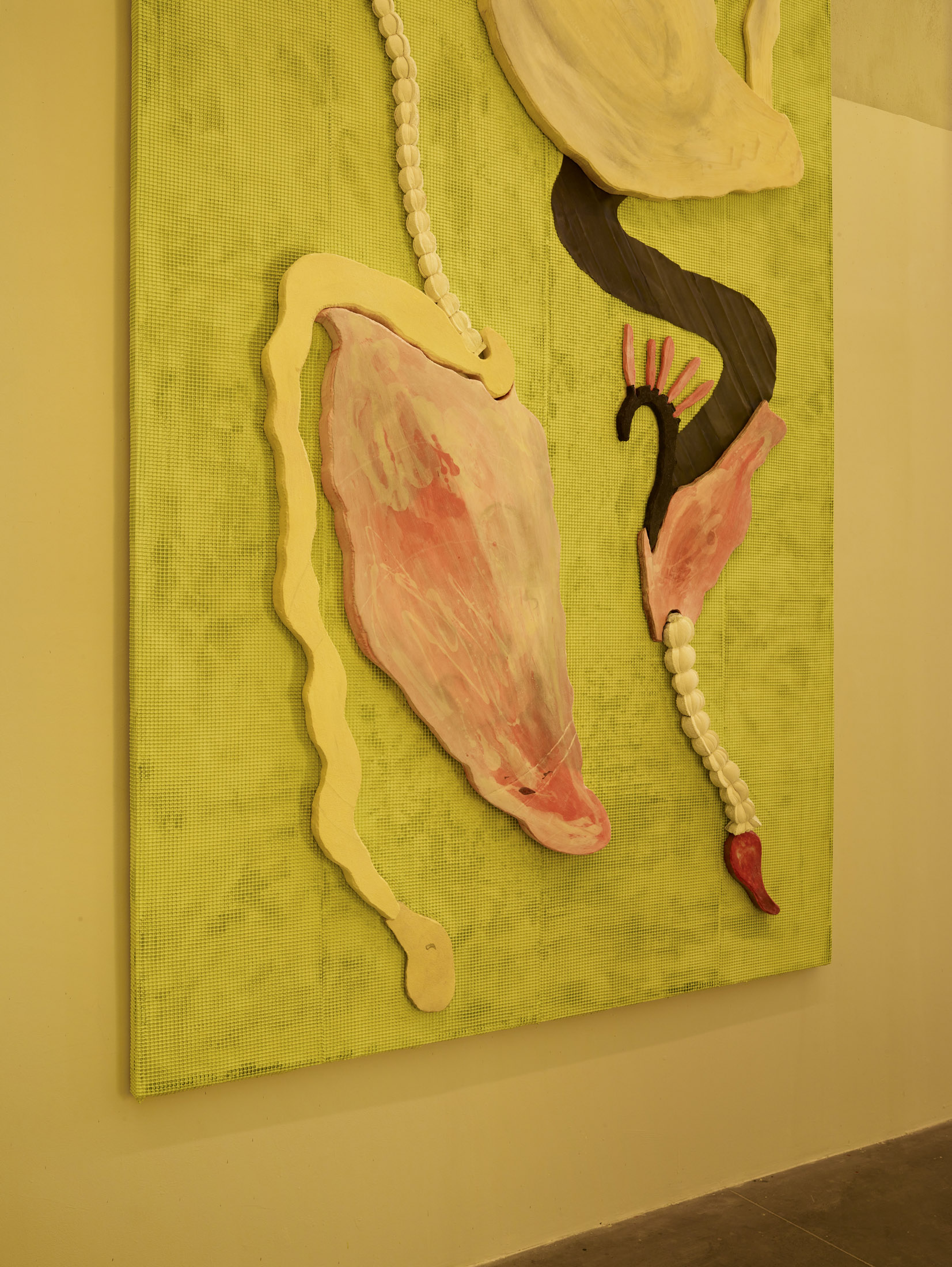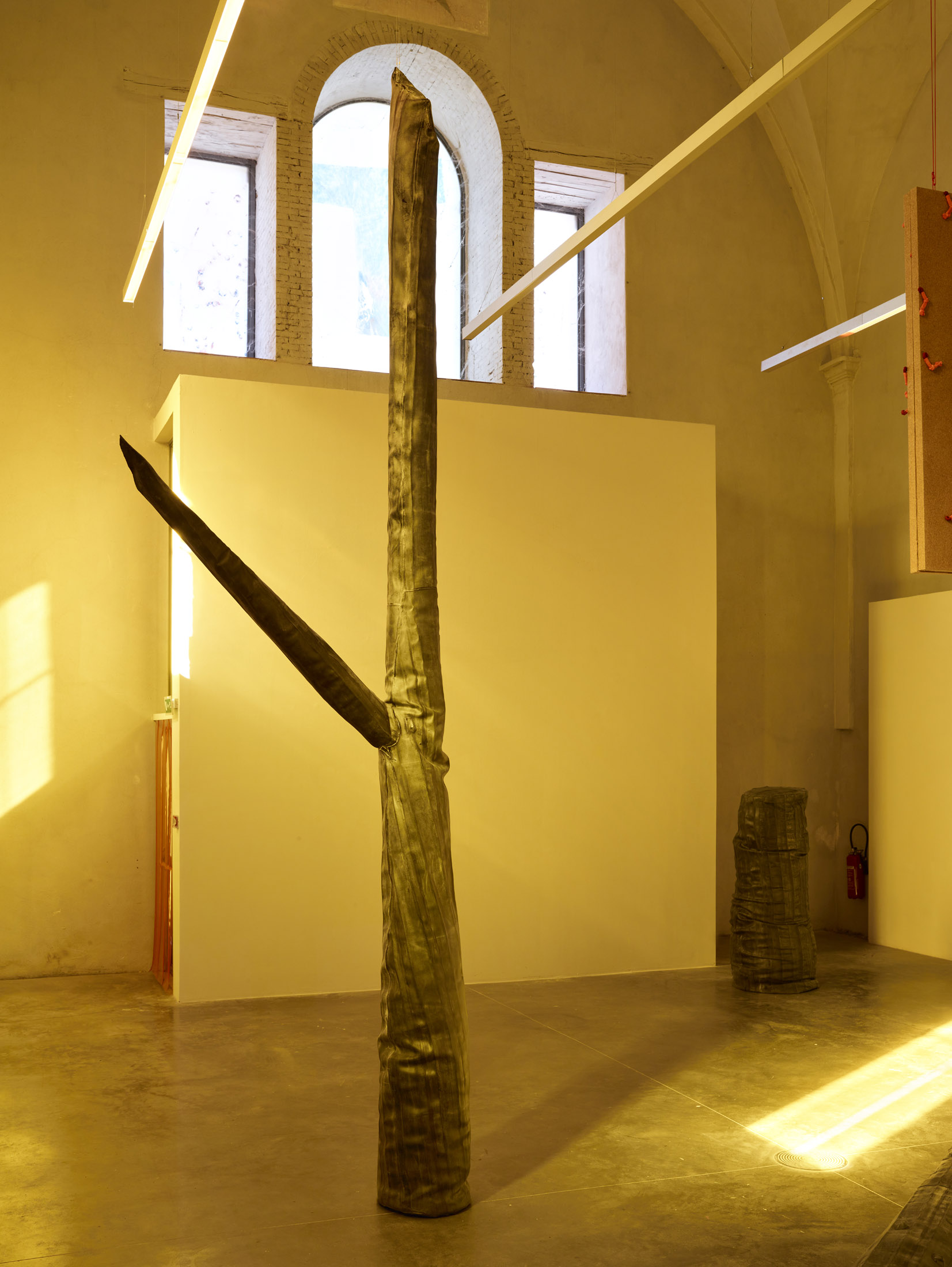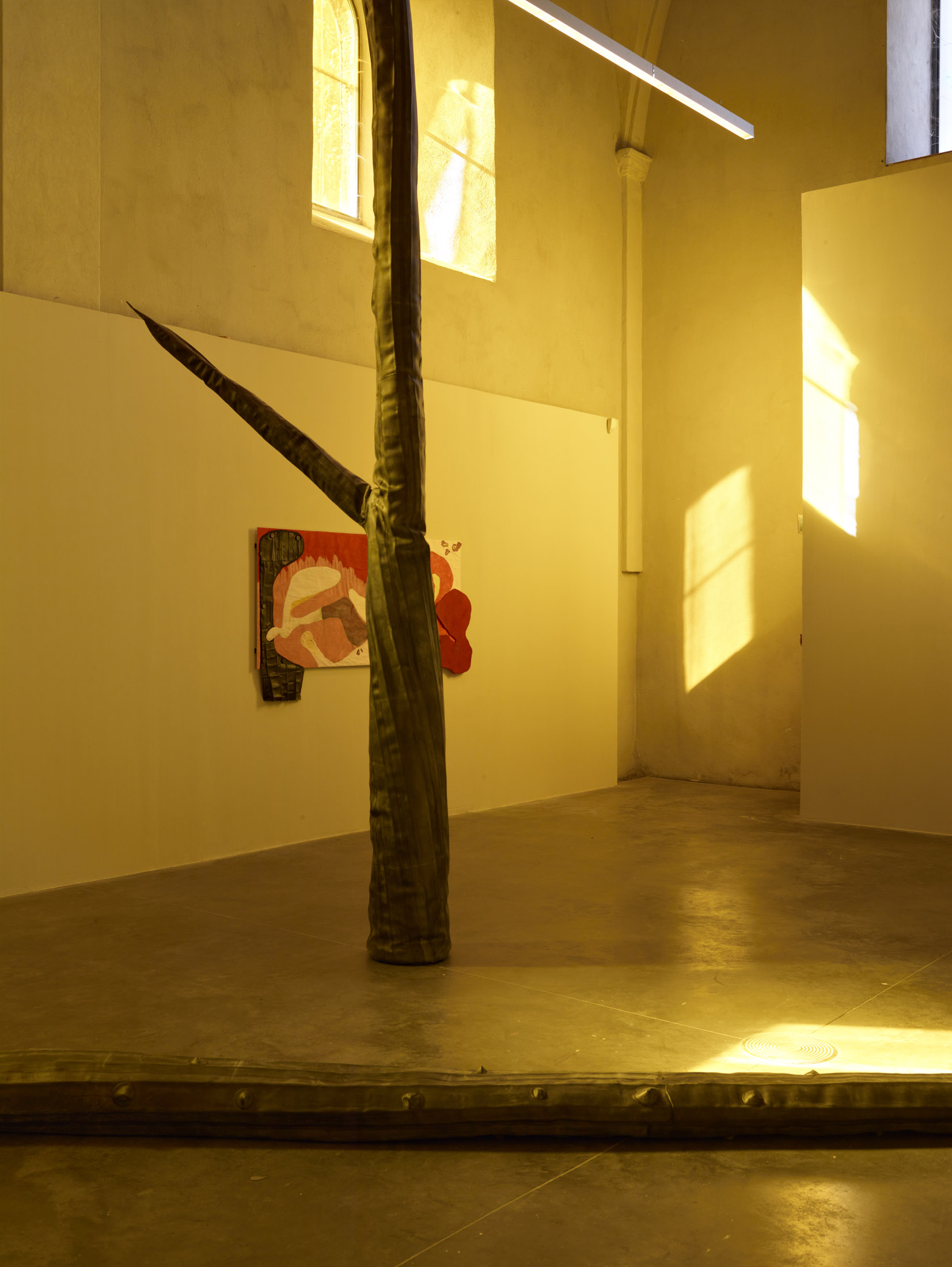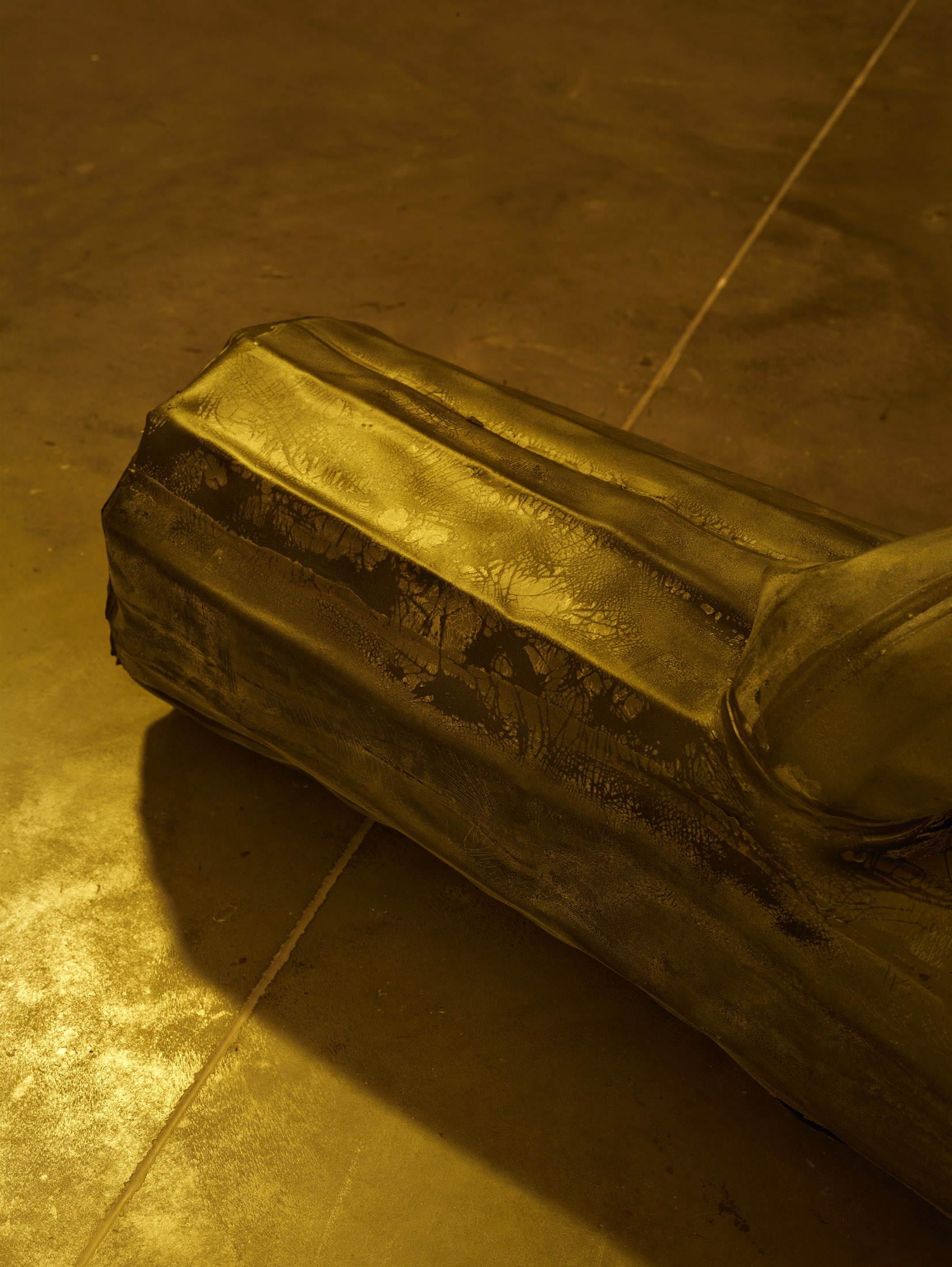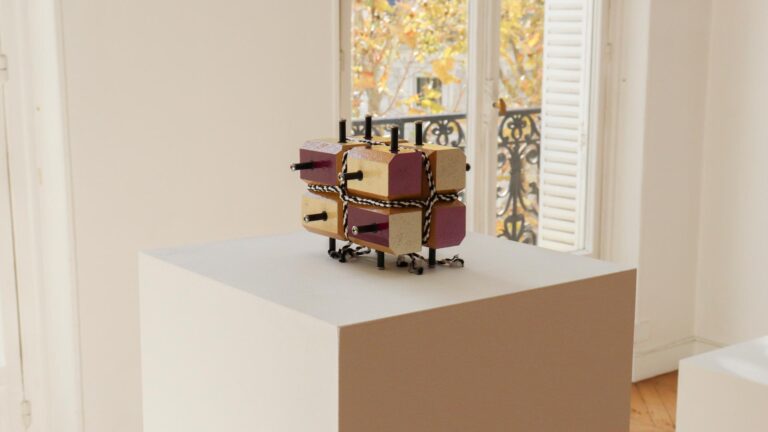Artist: Charlie Malgat
Exhibition title: SOLṢ
Curated by: Solenn Morel
Venue: Centre d’art contemporain Les Capucins, Embrun, France
Date: September 15 – November 4, 2023
Photography: François Deladerrière / all images copyright and courtesy of the artist and Centre d’art contemporain Les Capucins, Embrun
Sols are those undefined territories on the border between inside and outside, those skins that reveal on their surface what has been patiently constructed and assembled inside, minuscule lives that have germinated deep down, shielded from sight. Courage pushes us to go out, grow and live our lives in the full light of day, but exposing ourselves in this way may mean subjecting ourselves to the turbulence of the elements. Reason dictates that the less daring and the more vulnerable stay under cover. One of the most ancient civilisations, the termites, predates humans by 100 million years and ensured its own survival in the darkness of a world totally closed in on itself. Yet they have not abandoned the idea of manifesting their existence, not only through their often impressive architecture – termite mounds several metres high – but above all through the landscapes they swallow up that nourish them. Consumption, digestion and construction are intimately connected in the world of termites. They have no concept of waste: that which is eaten and digested is then eaten once again or used as raw material for further construction and conquest.
What particularly caught the attention of Charlie Malgat was their incredible capacity for adaptation, which has led to their extraordinary development. The artist likes to point out that termites literally weigh more than all humans put together. Their instinct has led them to form alliances with others, in this case micro-organisms that they have taken in to digest cellulose for them, an inexhaustible resource given the planet’s abundance of trees, grasses and roots. The termites would not have survived alone. They solved the primary need, food, by means of intestinal protozoa (including mixotricha paradoxa) for some, or cryptogams, fungi from which they sow spores, for others. Their indigestion has led them to invent new ways of making and being in the world.
Charlie Malgat translates these symbiotic relationships and fortuitous partnerships between species into works that resist definition. They are never just paintings, sculptures or films. They are never only one thing at once. The artist grafts sculptural forms into her paintings, paintings into her films and shapes that are specific to drawing into her sculptures. Her works are fertile soils in which, as in any good garden, different species cohabit in harmony. The landscapes and narratives she composes – she loves telling stories and setting them in context, having designed sets for the cinema before entering the Paris School of Fine Arts – are permeated by multiple references: biology, of course, but also science fiction, pop culture and, more generally, a genealogy of forms liberated from academic constraints. They are soft, tangy, flaccid and dripping, yet nothing about them is repulsive. Charlie Malgat even manages to create a kind of intimacy between viewers and her work. It is tempting to touch and stroke these rubber, foam and latex bodies. They appeal to the senses, as if they were inhabited by an inner life that urges us to verify with our hands, our tongues, our sense of smell, that which constitutes them or perhaps rather that which strips them bare.
In Sols, these pieces take the form of charred and partly hollowed-out trees (the termites have been there) surrounded by acid-coloured paintings of organic interiors under an overpowering tropical light. This landscape blends everything together: the small, the large, the day, the night, the outside, the inside, life and that which is not dead. Nothing is ever finished in the world of termites; cathedrals are built from waste. The works of Charlie Malgat are not canonical celebrations of strength and courage, but rather their connection to the earth and their evident vulnerability reassert the values of sharing and solidarity.


